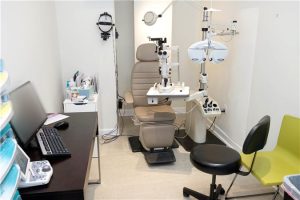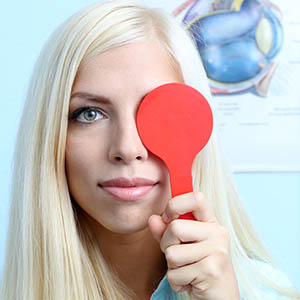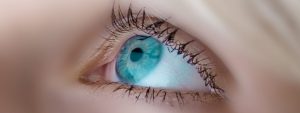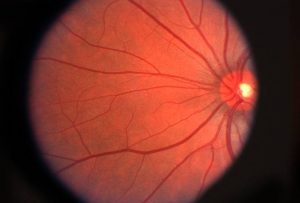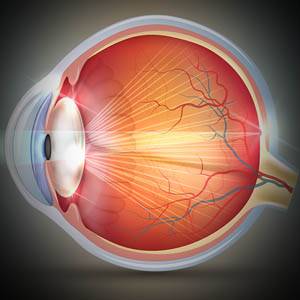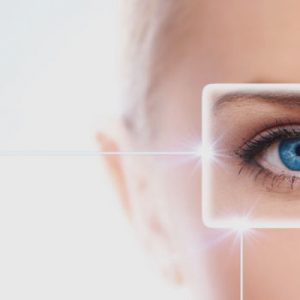2021 Update: Vision Therapy for Learning
Research shows 25 percent of children have a significant vision problem that impacts their learning, according to the American Optometric Association (AOA). Up to 80 percent of all learning comes through the visual pathways. There are 17 visual skills that are necessary to perform at school and the office, these are all critical for learning.
Read More2021 Update: Lazy Eye and Adults
Lazy eye is estimated to affect up to 5% of all adults. For many decades, it has been thought that only children under the age
Read More2021 Update: Reading Fluency
80 percent of classroom learning is visual, meaning that any problems in the visual system can impact a child’s reading fluency. If a child has
Read More2021 Update: BVD and Dyslexia
Studies show that up to 15% of the population may be dyslexic, though less than 10 percent actually receive a formal diagnosis. Dyslexia is a complex condition that impacts the way the brain interprets and processes information. It is one of the most common learning disabilities that affects writing, spelling and reading.
Read MoreIs Binocular Vision Important for Sports?
Binocular vision is important for athletes, as it impacts their performance. An athlete can improve their visual skills and boost their performance on the field with the help of sports vision training. Binocular vision is the eyes’ ability to focus on an object to create a single image, this is critical for achieving on the sports field.
Read MoreWhy Are Eye Exams Important?
Are Eye Exams Important? Yes! Many eye conditions, in their early stages, have no obvious signs or symptoms, so the annual exam is often the only way to detect eye conditions early. Since there are often no signs or symptoms, regular comprehensive eye exams are key to maintaining good vision and healthy eyes.
Read MoreWhat Are the Signs You Need Vision Therapy?
Are you concerned with your performance at school, work, or sports? Strengthening the visual skills boosts your ability to focus, read, concentrate and all other aspects required for work performance. Vision therapy is a customized, personalized treatment program designed to strengthen and improve visual skills, resulting in enhanced reading, learning, attention and the overall school performances.
Read MoreVision Therapy or Occupational Therapy?
25% of all children have a vision problem significant enough to affect their performance in school. Parents will do almost anything to get their child
Read MoreSandwiches and Vision Therapy?
A ‘sandwich’ is when pieces work better together, than each piece on its own … but what has this to do with vision therapy? This
Read MoreLazy Eye Success
Author: Dr. Randy Schulman EyeCare Associates, CT “Vision therapy has helped me ride my bike, and helps me for school in math, writing, and reading. I
Read MoreThe Larry Fitzgerald Story
Have you heard of NFL star Arizona Cardinals wide receiver, Larry Fitzgerald?
He is the second most career leading receiver for total TDs, yards, catches and more, after the legendary Jerry Rice. Larry credits his success on the field to a customized vision therapy program.
Vision Therapy or Orthoptic Therapy?
Vision therapy and orthoptic therapy are sometimes confused with one another. The information on this page includes everything you need to know about what makes
Read MoreVision for Rock Climbing
Rock climbing is a sport that requires physical strength, endurance, and balance … and visual skills Did you know that to be a successful climber,
Read MoreDo You Suffer From Headaches?
If you suffer from frequent headaches you may have binocular vision dysfunction. While this may sound concerning, try not to let yourself worry too much,
Read MoreUnderstanding Convergence Insufficiency
Convergence insufficiency (CI) affects up to 15 percent of all school-age children. Convergence insufficiency is a binocular vision condition that affects near vision and eye
Read MoreResearch Reveals New Effective Treatment for Adults with Lazy Eye
Amblyopia, also known as “lazy eye”, is a vision problem that affects both children and adults. Lazy eye typically begins in childhood and causes a
Read MoreDoes Amblyopia (Lazy Eye) Affect Eye-Hand Coordination?
What is a lazy eye and how does it develop? Amblyopia, commonly known as lazy eye, is a neuro-developmental vision condition that begins in early
Read MoreDo Pencil Push-Ups Work?
Pencil push-ups are a commonly prescribed eye exercise for the treatment of convergence insufficiency (CI). The question is, are they really effective? Pencil push-up treatment
Read More8 Vision Therapy Myths and Facts
Vision therapy is a specialized program prescribed for the treatment of vision conditions that cannot be fully treated with eyeglasses or contact lenses. Unfortunately, there
Read MoreHow Can a Developmental Optometrist Help?
Developmental optometrists believe that vision can be developed and improved through a learned process. A developmental optometrist, also called a behavioral optometrist, focuses on the
Read MoreEye Anatomy: External Parts of the Eye
The external parts of the eye work together to protect the eye and all of its internal structures. The following ocular structures are located on
Read MoreEye Anatomy: The Back of the Eye
Did you know that the back of the eye is responsible for transferring visual information from the eye to the brain? In order to see
Read MoreEye Anatomy: The Front of the Eye
Did you know that the eye is made up of over 2 million parts, each contributing a distinct vital role in your ability to see?
Read MoreHow Does the Eye Work?
If 80% of everything we learn comes through our eyes – the question is, how? The eye contains over two million working parts and is considered the second most complex organ in the body, the most complex is the brain. The inner structures of the eye all work together to produce an image that your brain interprets.
Read MoreContact Lenses: What Can Go Wrong?
When it comes to eyewear, contact lenses offer many benefits. But contact lens use can also cause serious complications to your eye health and vision,
Read MoreGuide to Soft Contact Lenses
Approximately 90 percent of contact lens wearers prefer soft contact lenses. There are many different options when it comes to soft contact lenses. While your optometrist can help you to narrow down your choices— usually dependent on your prescription and personal lifestyle, it is important to be aware of the advantages and disadvantages of each type of lens
Read MoreWhat Is Intermittent Strabismus?
Strabismus, also called an eye turn, can be intermittent or constant— depending on how often it occurs. Intermittent strabismus occurs occasionally, most often during stressful
Read MoreHow Are Prisms Used in Vision Therapy?
Prism lenses can improve vision for clearer, more comfortable binocular vision. Prism lenses, also called yoked prisms, are often prescribed by eye doctors for patients
Read MoreWhat Are Prism Lenses?
Prism lenses can be effectively used to treat vision conditions, such as double vision and other binocular vision difficulties. One of the most common uses for an eye doctor to prescribe prisms is to treat a condition known as Binocular Visual Dysfunction (BVD).
Read MoreOcular Migraines
Ocular migraines are a rare form of migraines, affecting 1 in 200 migraine sufferers. What is a ocular migraine? A visual migraine, also known as
Read MoreCan Adults Have Convergence Insufficiency?
Convergence insufficiency (CI) is a common vision condition that affects up to 17 percent of children and adults. While CI is generally diagnosed in children
Read MoreBell’s Palsy
What is Bell’s palsy? Bell’s Palsy is a condition that causes the muscles on one side of your face to droop or become stiff, either
Read MoreStrabismus Surgery
What is strabismus surgery? Strabismus, also known as “crossed-eyes” occurs when the two eyes are unable to achieve proper alignment to focus on an object.
Read MoreHow Is Convergence Insufficiency Diagnosed?
Do you often lose your place while reading? Do words on the computer screen seem blurry? Do you suffer from frequent headaches or eye discomfort
Read MoreCan Glasses or Eye Patches Treat Convergence Insufficiency?
If you have been diagnosed with convergence insufficiency (CI), or are experiencing symptoms of CI, you may be wondering how CI is treated. Any type
Read MoreDo I Have Convergence Insufficiency?
Wondering if convergence insufficiency (CI) is impacting your school or work performance? Take this quick quiz to find out. People with CI often experience blurry
Read More7 Signs Your Child Might Have a Lazy Eye
Do you know the signs to look for to identify lazy eye in your child? A lazy eye is generally difficult to recognize because it usually develops in only one eye, without a noticeable eye turn. It is important to be aware of the signs that may indicate a lazy eye, since in most cases, the condition is not recognized easily – though it can significantly affect a child’s quality of life.
Read MoreConvergence Insufficiency FAQs
Q1: What is convergence insufficiency (CI)? A: Convergence insufficiency is a highly treatable binocular vision condition that affects near vision and eye muscle coordination. Convergence
Read MoreVision and Learning Difficulties FAQs
These are the ten most frequent questions asked to vision therapy eye doctors.
You may easily find answers to your questions. If you still have questions, contact your nearest eye doctor experienced in children’s vision and vision therapy.
Blue Light and Screens
Over exposure to high energy visible (HEV) blue light may be harmful to your health, and has become a rising concern among eye care professionals.
Read MoreOptical Frames
Shopping for eyeglass frames can be quite overwhelming… but also lots of fun! Eyeglasses nowadays come in a variety of styles, shapes, colors, and materials— metal, plastic, and even natural wood. Optical stores are filled with rows and rows of frames, manufactured by popular brands and designers to suit every taste and unique fashion sense.
Read MoreNeuro-Optometry
Have you suffered a traumatic brain injury (TBI) or concussion and still experiencing vision problems? TBIs can cause double vision, blurriness, headaches and eye strain, these can be successfully treated with a personalized vision therapy program.
Read MoreGuide to Eye Turns
Eye turns, are also known as strabismus, and affect over 1 in 20 babies and toddlers. With early detection and eye care treatment, with eyeglasses and vision therapy, the eye turn can often be resolved, without relying on complicated eye surgeries.
Read MoreVision for Special Needs
Children with special needs have a high rate of visual problems and their lives can be enhanced with the correct eye care. Vision therapy has also been shown to improve the visual skills to improve eye contact and interactions with their surroundings – significantly enhancing their lives.
Read MoreVision Therapy for Lazy Eye
Lazy eye is a common vision problem, affecting up to 1 in 20 (5%) of all children. Has your child been treated for lazy eye, yet the vision remains poor? Lazy eye can be successfully treated for both children and adults, with new digital techniques using computer-based 3D games.
Read MoreVision Therapy
Just checking how exerpts work
Read MoreVision and Vestibular Dysfunction
Do you often experience dizziness or feel as though the world is spinning around you (vertigo)?
Do you experience motion sickness, or a persistent sense of unsteadiness or imbalance? You may have an inner ear disturbance called Vestibular Dysfunction. The good news is that these symptoms can be significantly reduced with vision therapy, allowing you to regain your quality of life.
Vision Therapy for TBI Related Vision Conditions
How does a TBI affect vision? Vision is the most important source of sensory information. Consisting of a sophisticated complex of subsystems, the visual process
Read MoreVision Therapy for Traumatic Brain Injuries: Success Stories
Below are stories from children and adults who have suffered a traumatic brain injury (TBI) and their experiences with Vision Therapy. *Names have been altered
Read MoreVision, Dizziness and Imbalance
Many people experience dizziness or balance issues following a mild concussion or other traumatic brain injury (TBI). Dizziness or imbalance can be caused by a
Read More5 Essential Facts About Traumatic Brain Injuries
Have you suffered a brain injury? Here are 5 facts that are essential to know: A traumatic brain injury (TBI) is an injury to the
Read MoreStrabismus FAQs
Q: Is strabismus surgery the only treatment option for an eye turn? A: No. Strabismus treatment options depend on the type of strabismus— direction of
Read MoreVision and Learning Difficulties
Approximately 80 percent of all learning comes through the visual pathways. Any interference in the visual pathways can inhibit a child from performing to their maximum potential. According to the American Optometric Association (AOA) 25% of all children, or 1 in 4 students, have a vision problem significant enough to impact their learning.
Read MoreWhat Is Lazy Eye?
According to research, amblyopia affects up to 1 in 33 of the population— this means up to 10 million people in the U.S. may have a lazy eye. Amblyopia, commonly known as a “lazy eye”, is a neuro-developmental vision condition that begins in early childhood and develops when one eye is unable to achieve normal visual acuity, causing blurry vision in the affected eye, even with corrective eyewear. The condition also commonly presents with poor depth perception, and reading difficulties.
Read MoreHow Is Lazy Eye Treated?
A variety of treatment options have been shown to treat lazy eye – the aim is to strengthen the eye-brain connections necessary for binocular vision. Traditionally, it has been thought that lazy eye treatment should begin before a child reaches around eight years old, however recent research shows that even after this age, lazy eye can be successfully treated. That being said, the earlier the condition is diagnosed, the better the treatment outcome will be.
Read More





